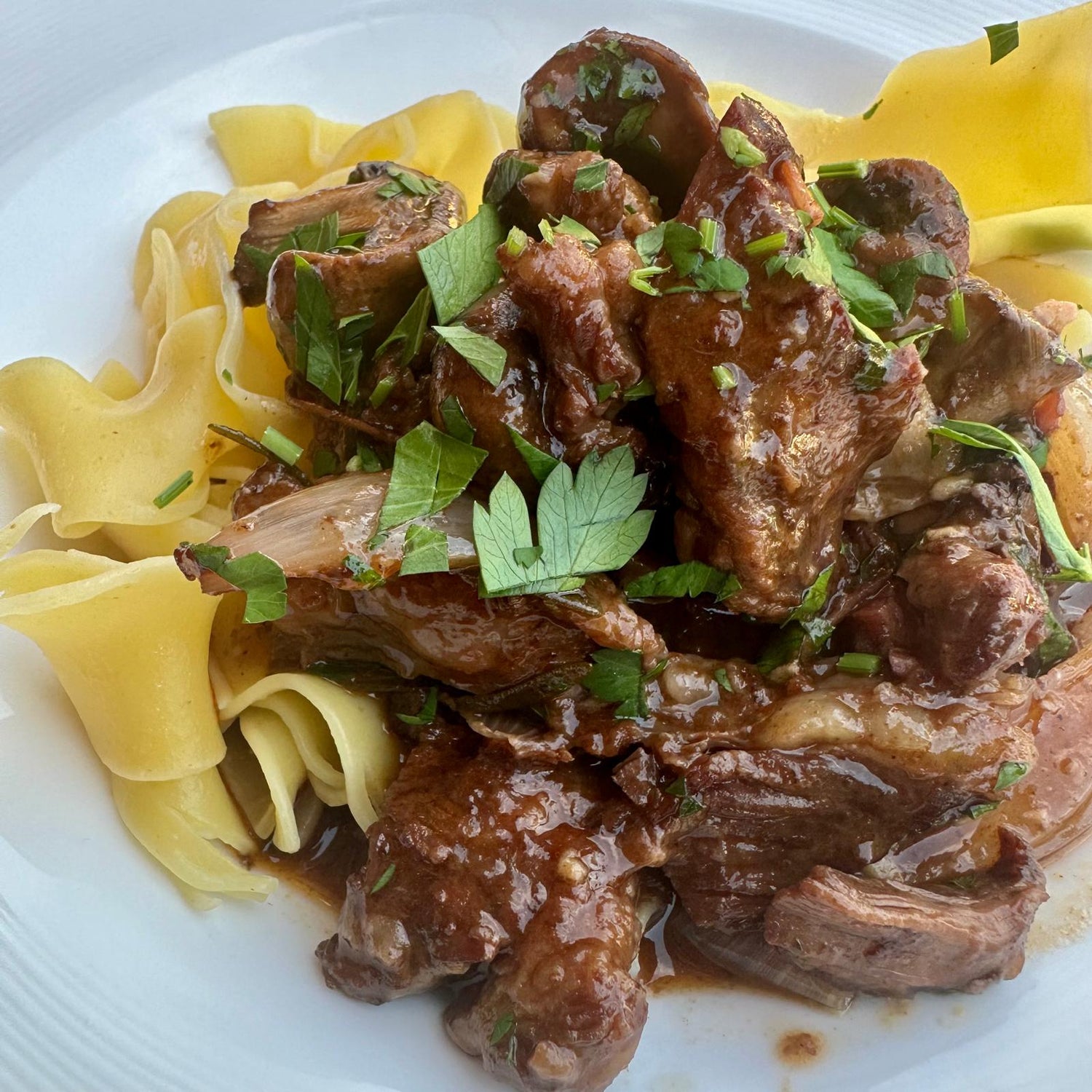
10 Types of Rice and How to Cook Them Perfectly
Share
Rice is one of the most widely consumed grains worldwide and comes in an impressive variety of types, each with its own unique texture, flavour, and ideal cooking method. From fragrant basmati to chewy black rice, understanding the differences can help you elevate your meals. There is nothing worse than overcooked rice! In this guide, we’ll cover ten popular types of rice, their characteristics, and the best ways to cook them.
Many rices require rinsing. This removes any excess starch and what we like to call 'travelling dust'. Be sure to read on to find out what to do with the 'rice rinsing water'!
1. Basmati Rice
Characteristics: Basmati rice is a long-grain rice known for its nutty aroma and fluffy texture. It’s a staple in Indian and Middle Eastern cuisines and pairs beautifully with curries and stews. NOTE: we've worked with a few different types of basmati: Sella is a 'par-cooked' style of basmati rice that is used in Middle Eastern/ Persian cuisine. Long grain basmati rice is primarily Indian. Long ago we had the pleasure of working with one of our region's best Indian Chefs. We asked him: what's the best Basmati to buy in Canada? He said, any kind! Many of the best basmati's are shipped across North America. Just be sure to rinse & soak before cooking.
How to Cook Basmati Rice:
- Rinse rice three times in cold water to remove excess starch. We usually do this right in the pot, using one hand to swirl the rice, pick it up, run it through your hands.
- Soak the rice: drain any rinsing water and soak in cold water, covering rice by about 1 inch.
- In a pot, add 1.5 cups of water for every cup of rice, bring up to a boil, cover, then lower to a simmer.
- Cook for about 12-15 minutes, or until the water is absorbed.
- REST the rice--do not overlook this step. Think of it as part of the cooking process. You rest your rice by keeping it covered, off the heat, for 5-15 minutes.
- Fluff with a fork before serving.
NOTE: we generally do not add salt to basmati rice. It's sweet, mild flavour is best kept without salt. We DO often add aromatics to enhance this however, such as a bay leaf, a cinnamon stick or cardamom pods.
2. Jasmine Rice
Characteristics: Jasmine rice is a fragrant, slightly sticky long-grain rice often used in Thai and other Southeast Asian dishes. It has a light floral aroma and tender texture. If we had to have just ONE rice in our pantry, Jasmine would be it! It is perfect for so many uses, including fried rice, and even rice pudding.
How to Cook Jasmine Rice:
- Rinse rice three times, as per with basmati rice. Enjoy this process!
- For 2 cups of rice, place in a pot with 2 cups of water and bring up to a boil over high heat.
- Allow to boil until no visible water remains, about 4 minutes BEFORE covering.
- Cover and reduce heat to lowest setting and cook for 10 minutes. Turn off and let. rest, covered for 10 minutes.
- If using it for Fried Rice, scrape out onto a baking sheet to cool.
Try our Kimchi Fried Rice, Ham Fried Rice, or master a whole meal with our Chinese Take-Out Cooking Class!!
3. Arborio Rice
Characteristics: Arborio is a short-grain rice known for its high starch content, making it creamy when cooked. This Italian rice is primarily used in risotto and other creamy dishes.
How to Cook Arborio Rice (for Risotto):
- In a large pan, toast 1 cup of arborio rice in olive oil until lightly translucent.
- Add 1 cup of warm broth and stir until absorbed, continuing to add broth 1/2 cup at a time while stirring.
- Continue this process for 18-20 minutes, until the rice is creamy and al dente.
4. Black Rice (Forbidden Rice)
Characteristics: Black rice, also known as forbidden rice, has a deep purple color and is packed with antioxidants. It has a slightly nutty, earthy flavor and a chewy texture. Both black and brown rices make the perfect addition hearty salad bowls!
How to Cook Black Rice:
- Rinse 1 cup of black rice under cold water.
- Combine 1 cup of rice with 2 cups of water in a pot and bring to a boil.
- Reduce heat to a simmer, cover, and cook for 30-35 minutes, or until the water is absorbed.
- Let the rice sit for 5-10 minutes before serving.
5. Brown Rice
Characteristics: Brown rice is whole-grain rice with the bran and germ intact, giving it a nuttier taste and chewier texture than white rice. It’s a healthier option, rich in fiber and nutrients. We love brown rice as it is great warm and cold, perfect for Summer salads.
How to Cook Brown Rice:
- The most foolproof way to cook brown rice is by using the 'Pasta Method'.
- Bring a large pot of water to the boil and lightly salt. Add rice (the amount does not really matter here, water to rice ratios don't matter). Generally we cook 1 to 1 1/2 cups for 4 generous portions.
- Boil until al dente, about 25 minutes.
- Drain through a fine mesh strainer and cool on a baking sheet or serve hot right away.
6. Sushi Rice
Characteristics: Sushi rice is a short-grain Japanese rice that’s sticky and slightly sweet. It’s essential for sushi, but can also be enjoyed in rice bowls and other Japanese dishes. What's important about getting 'sushi rice' right, is to achieve the 'mochi mochi', the Japanese equivalent of 'al dente'. The rice should still have a little bite to it.
How to Cook Sushi Rice (for 3 cups of raw rice--enough for 8-10 rolls of sushi!). This method was learned after making sushi every week for 1 year!
- Rinse rice until water runs clear, about 3 times
- Soak 20-30 minutes with about 1 inch of cold water covering it.
- Bring to boil with 3 cups of measured water in a saucepot
- Cover tightly.
- BOIL on high for 30 seconds.
- Lower heat and cook for 7 more minutes
- Rest off of the heat for 3-5 minutes
- Spread on tray at the same time sprinkling with Rice vinegar mixture if using for sushi, fanning the rice and 'cutting' it with a spatula to allow steam to escape.
7. Wild Rice
Characteristics: Wild rice isn’t technically rice but is a grass seed with a nutty, earthy flavour. Its long grains have a chewy texture, making it ideal for salads and grain bowls.
How to Cook Wild Rice:
- Rinse 1 cup of wild rice.
- Cook this the same way as brown rice, using the 'pasta method'.
- Wild rice can really vary in how long it takes to cook. 30-45 minutes, depending on its age.
8. Bomba Rice
Characteristics: Bomba Rice is a short-grain rice variety primarily grown in Spain, specifically in the Valencia and Delta del Ebro regions. Known for its ability to absorb liquid without becoming mushy, Bomba rice is the go-to choice for paella and other Spanish rice dishes. Unlike other rice varieties, Bomba rice expands in width rather than length, allowing it to absorb about three times its volume in liquid, resulting in flavourful, perfectly textured rice.
How to Cook Bomba Rice (a basic, plain way. See link HERE for Paella Recipe)
- In a wide frying pan or paella pan, bring the broth to a simmer over medium heat.
- Add the Bomba rice directly to the simmering broth. Do not stir the rice once it’s added, as traditional paella is cooked without stirring to develop a crust on the bottom.
- Cook for 18-20 minutes or until the liquid is absorbed and the rice is tender but still has some firmness.
9. Sticky Rice (Glutinous Rice)
Characteristics: Sticky rice is a short-grain rice with a high starch content, resulting in a sticky texture. It’s popular in Southeast Asian cuisines, especially for desserts and dumplings.
How to Cook Sticky Rice:
- Soak 1 cup of sticky rice in water for at least 4 hours or overnight.
- Drain and steam in a bamboo steamer lined with cheesecloth for 20-25 minutes until soft.
- Serve as a side dish or in desserts.
10. Parboiled Rice
Characteristics: Parboiled rice is partially pre-cooked, making it firmer and less sticky than other rice types. It retains more nutrients than white rice and is often used in dishes requiring longer cooking. Known now as 'Ben's Original', this is definitely the rice we grew up eating, at least once a week. It's still the only rice we use in Kirstie's Grandma's Traditional Cabbage Rolls.
How to Cook Parboiled Rice:
- No need to rinse.
- In a pot, add 1 cup of rice and 2 cups of water, bring to a boil, then reduce to a simmer.
- Cover and cook for 20 minutes until water is absorbed.
- Let sit for a few minutes before fluffing with a fork.
Parboiled rice is also great for rice pilafs: sauteing onion and other aromatics in oil or butter, then adding the rice, coating with the fat. Then add liquid, often flavourful stock and cook as per usual.
Rice Rinsing Water: Five Uses for that starchy water!
- Water your plants. Kirstie's plants are thriving due to the high potassium level of the rice rinsing water
- Tame that frizzy hair! Spritz it on your hair to enhance curls and tame frizz. Ask Jody.
- Soothe the tummy of your favourite pet by giving them some rice rinsing water to drink.
- Used extensively in the beauty industry, use it as a spot treatment for acne prone skin.
- When prepared with salt, rice water can also be used as natural, homemade electrolyte.
Final Thoughts
Each rice type offers unique flavors and textures that can enhance your dishes, from fluffy Basmati for curries to creamy Arborio for risottos. Knowing how to cook each variety properly ensures you can get the most flavour and texture from each meal. Whether you’re looking to add more whole grains to your diet or experiment with new flavors, rice offers endless possibilities to explore in the kitchen.
Experiment with different types and find which one brings out the best in your favorite dishes. Enjoy your cooking adventure!



